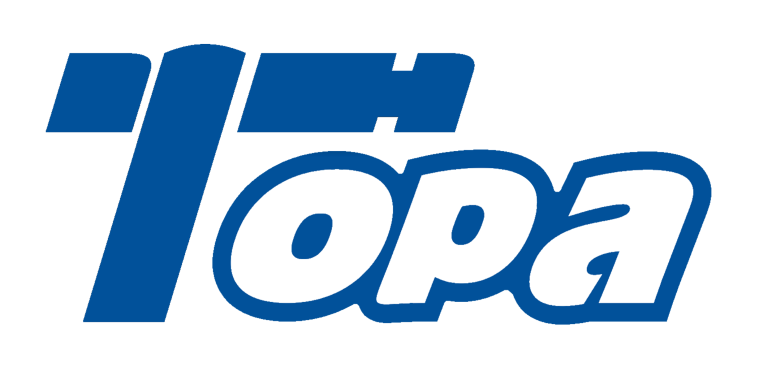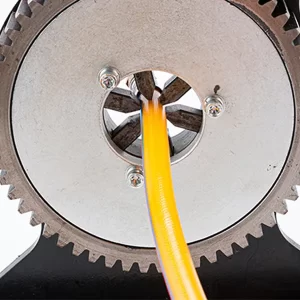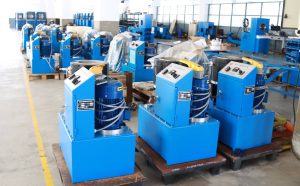Hydraulic hose crimpers are crucial tools in industries where hydraulic systems are used, like manufacturing and construction. These machines ensure the secure connection between hoses and fittings. But what happens when a hydraulic hose crimper is faulty? The consequences can range from minor inconveniences to major operational disruptions. In this article, we will explore how a faulty hydraulic hose crimper can affect your operations and what you can do to prevent these issues from causing significant damage.
1. What Issues Can a Faulty Hydraulic Hose Crimper Cause?
When a hydraulic hose crimper fails to function correctly, it can lead to a range of problems that affect your operations. The most common issues include inconsistent crimping, which causes leaks, improper fitting connections, and reduced hose life. These problems can lead to increased downtime, higher maintenance costs, and even safety hazards.
Buckle up, because here’s the kicker: these issues don’t just stop at equipment failure. They often create a domino effect across your entire operation. Equipment breakdowns can result in project delays, and the need for replacement parts can drive up costs. As a result, your business suffers, and your credibility with clients might take a hit.
A faulty crimper may also cause the fittings to be improperly sealed, leading to hydraulic fluid leaks. This can compromise the integrity of the hydraulic system, posing significant risks to worker safety. Furthermore, frequent equipment breakdowns can damage your reputation in the industry, causing long-term financial setbacks.
Here’s a table summarizing the issues caused by faulty crimpers:
| Problem | Description | Impact on Operations |
|---|---|---|
| Inconsistent crimping | Poor sealing leads to leaks and loss of pressure. | Increased downtime and repair costs. |
| Reduced hose life | Improper crimping shortens the lifespan of the hose. | Frequent replacements and higher maintenance costs. |
| Safety risks | Hydraulic leaks may cause accidents, including fires or injuries. | Serious safety hazards and potential legal implications. |
| Equipment breakdowns | Frequent failures can lead to downtime and hinder productivity. | Delays in production, missed deadlines, and lost revenue. |
2. How Does a Faulty Hydraulic Hose Crimper Affect Hose Performance?
Hydraulic hoses are integral to maintaining high pressure in hydraulic systems. When a crimper is faulty, the resulting poor-quality crimp can impact the hose’s performance. The sealing may not be uniform, causing inconsistent pressure throughout the system. This can lead to inefficient system operation and higher energy consumption.
Let’s break this down: imagine a system that relies on high pressure to move fluid. If a hose fails to maintain that pressure, the system’s overall performance will suffer. Components may overheat or malfunction, leading to even more extensive damage. What’s the real story? A small mistake in crimping can snowball into major system failures.
Hydraulic systems are designed to withstand high pressures, but a poorly crimped hose will often be unable to maintain this pressure. This results in energy inefficiency and a loss of operational effectiveness. Moreover, the increased strain on other components can lead to their premature failure, making the entire system more costly to maintain.
Here’s a table comparing properly crimped hoses versus faulty ones:
| Crimping Quality | Performance Characteristics | Impact on System |
|---|---|---|
| Properly crimped | Consistent pressure, durable hose connections. | Optimal system efficiency, reduced maintenance. |
| Faulty crimping | Inconsistent pressure, increased risk of leaks. | System inefficiency, premature failure of components. |
3. What Are the Safety Hazards Associated with Faulty Crimping?
A faulty hydraulic hose crimper doesn’t just lead to operational inefficiencies; it can also pose serious safety hazards. Hydraulic systems operate under high pressure, and any failure in the crimping process can lead to leaks. These leaks can result in fluid spraying under high pressure, which could potentially cause injuries.
But here’s the kicker: it’s not just about equipment failure. It’s about the potential dangers to your employees. A faulty crimper could cause a hose to burst, spraying hot, high-pressure fluid that could result in severe burns or even life-threatening injuries. Worker safety must always come first, and a faulty crimper could put everyone at risk.
Moreover, the hydraulic fluid could also leak onto the ground, creating slippery surfaces that increase the risk of slip-and-fall accidents. In the worst-case scenario, a hydraulic fluid leak could lead to a fire, especially if the fluid is ignited by sparks or hot surfaces.
Let’s look at the safety risks in a table:
| Safety Hazard | Description | Impact on Workers |
|---|---|---|
| High-pressure leaks | Leaks can cause hydraulic fluid to spray under high pressure. | Risk of burns, lacerations, or life-threatening injuries. |
| Slip-and-fall accidents | Hydraulic fluid on the floor creates slippery conditions. | Increased risk of slips, falls, and injuries. |
| Fire hazards | Leaks can ignite if the fluid comes into contact with sparks. | Potential for catastrophic fires and injuries. |
4. How Can a Faulty Crimper Lead to Costly Repairs?
In addition to the immediate impact on your operations, a faulty hydraulic hose crimper can lead to costly repairs. A poorly crimped hose may cause other system components to fail, which results in expensive downtime and maintenance.
What’s the real story? Replacing damaged hoses or system parts can be costly. But it’s not just the parts themselves—it’s the labor costs involved in identifying and repairing the damage. A single faulty crimp can lead to the need for extensive repairs, which can be a drain on your business resources.
Additionally, if the faulty crimper causes a hydraulic system to fail under high pressure, it could damage other equipment. This could require even more expensive repairs or, in some cases, complete replacements of critical components.
Here’s a table showing the costs associated with faulty crimping:
| Type of Repair | Description | Estimated Costs |
|---|---|---|
| Hose replacements | Constant hose failures due to faulty crimping. | $100–$500 per hose depending on length. |
| System repairs | Damage to other components due to loss of pressure. | $1,000–$5,000 per repair. |
| Equipment replacement | Complete replacement of damaged equipment or system parts. | $10,000–$50,000+ for major components. |
5. How Can a Faulty Hydraulic Hose Crimper Impact Your Workflows?
A faulty crimper can cause significant disruptions to your workflows. These disruptions can range from delays in the production schedule to extended downtime while repairs are made. With every delay, your production efficiency decreases, ultimately affecting your bottom line.
But here’s the kicker: these delays don’t just affect your immediate operations—they can snowball into longer-term impacts. If your clients rely on your business to meet deadlines, a delay in production could lead to missed deadlines and a loss of trust. This directly impacts your reputation and client satisfaction.
Additionally, the need to halt work while repairs are made can also lead to loss of productivity. Even a short delay can lead to longer-term inefficiencies, as workers sit idle while the issue is fixed. This results in not only financial loss but also the demoralization of employees who can no longer work as efficiently as before.
Let’s break down the impact on workflows:
| Workflow Impact | Description | Resulting Effects |
|---|---|---|
| Production delays | Downtime caused by equipment failure. | Missed deadlines, dissatisfied clients, lost revenue. |
| Increased downtime | Repairs and maintenance slow down overall work progress. | Loss of productivity, lower morale among workers. |
| System inefficiency | Poor performance of the hydraulic system. | Increased labor costs, lowered output. |
6. Why Should You Regularly Inspect Your Hydraulic Hose Crimper?
Preventive maintenance is key to avoiding costly repairs and safety hazards. Regular inspections ensure that your crimper operates at peak efficiency, preventing issues before they cause significant damage.
Ready for the good part? Regular inspections don’t just help you catch small issues—they can also extend the life of your equipment. This means fewer breakdowns, lower maintenance costs, and a smoother operation overall.
The process doesn’t have to be complex. Regular checks on key components, like the crimping pressure, hose quality, and hydraulic fluid levels, can identify potential issues early. If addressed promptly, these issues can prevent much larger, costlier problems down the line.
Here’s a table summarizing inspection tasks:
| Inspection Task | Description | Frequency |
|---|---|---|
| Check crimping pressure | Ensure consistent pressure for proper sealing. | Monthly |
| Inspect hydraulic fluid | Ensure that fluid levels are optimal and there are no leaks. | Every 6 months |
| Examine hoses and fittings | Look for signs of wear or damage in hoses and fittings. | Quarterly |
7. What Are the Most Common Causes of Hydraulic Hose Crimper Failures?
Several factors can lead to crimper failure, including poor maintenance, low-quality materials, or improper usage. Over time, the wear and tear on your crimper can lead to issues that impact its performance.
But here’s the kicker: understanding the common causes of failure allows you to take preventive measures before the problem becomes serious. The good news is, most of these causes are avoidable with the right care and attention.
Here’s a table of common causes of crimper failure:
| Cause of Failure | Description | Preventive Measures |
|---|---|---|
| Poor maintenance | Lack of regular checks and care leads to performance issues. | Implement a regular inspection schedule. |
| Low-quality materials | Using subpar parts or materials leads to early failure. | Invest in high-quality crimping components. |
| Improper usage | Incorrect use can cause the crimper to malfunction. | Train staff on proper usage techniques. |
8. How Do You Diagnose a Faulty Hydraulic Hose Crimper?
Diagnosing a faulty hydraulic hose crimper requires a systematic approach. Key signs to watch for include inconsistent crimping pressure, physical damage to the crimper, and hydraulic fluid leaks.
What’s the real story? The sooner you identify an issue, the easier it is to fix. A proactive approach to diagnosing problems can save you time, money, and unnecessary stress.
Here’s a table summarizing diagnosis steps:
| Diagnostic Step | Description | Tools/Methods Used |
|---|---|---|
| Check crimping pressure | Measure the crimping pressure to ensure it’s consistent. | Pressure gauge or digital crimp monitor. |
| Inspect physical damage | Look for cracks, worn parts, or other signs of wear and tear. | Visual inspection and maintenance log. |
| Test for leaks | Look for fluid leakage around the crimped areas. | Leak detector or visual check. |
9. Can a Faulty Crimper Be Repaired, or Does It Need Replacement?
Whether a faulty crimper can be repaired or needs replacing depends on the extent of the damage. In many cases, small issues like worn seals or parts can be repaired easily. However, more serious damage, like a cracked frame or major malfunction, may require a complete replacement.
Here’s the kicker: knowing when to repair and when to replace is crucial to minimizing downtime and cost. Repairing a small issue is often the most cost-effective solution, but replacing severely damaged crimpers ensures long-term reliability.
Here’s a table outlining repair vs. replacement scenarios:
| Condition | Action | Cost Implication |
|---|---|---|
| Minor wear and tear | Repair parts, replace seals and components. | Low-cost, quick turnaround. |
| Major damage | Replace crimper if key components are damaged. | High-cost, extended downtime. |
10. How Does the Quality of Your Hydraulic Crimper Affect Your Work?
The quality of your hydraulic crimper plays a direct role in the efficiency and safety of your operations. A high-quality crimper ensures consistent performance and minimizes the risk of equipment failure.
Here’s the deal: investing in quality equipment now can save you a fortune down the line. A reliable, high-quality crimper can reduce downtime, increase productivity, and lower long-term maintenance costs. In contrast, cheap crimpers often lead to more repairs and failures, making them a poor investment in the long run.
Here’s a table comparing high-quality vs. low-quality crimpers:
| Quality | Benefits | Drawbacks |
|---|---|---|
| High-quality crimper | Reliable performance, longer lifespan, fewer breakdowns. | Higher initial cost. |
| Low-quality crimper | Lower upfront cost. | Increased maintenance costs, more frequent breakdowns. |
11. How to Choose the Right Hydraulic Hose Crimper for Your Needs?
Choosing the right hydraulic hose crimper depends on several factors, including the type of work, the materials you are working with, and the crimper’s capacity. It’s important to consider the specific requirements of your operations before making a purchase.
Ready for the good part? A little extra time spent researching your options can lead to significant long-term savings and operational improvements. Make sure to evaluate the crimper’s specifications carefully.
Here’s a table comparing different crimper types:
| Crimper Type | Best for | Key Features |
|---|---|---|
| Manual crimpers | Low-volume operations. | Lower cost, hands-on operation. |
| Hydraulic crimpers | High-pressure, heavy-duty applications. | Consistent performance, higher capacity. |
| Electric crimpers | Precision work, high volume. | Fast, accurate crimping with minimal effort. |
12. What Are the Latest Advances in Hydraulic Hose Crimping Technology?
The hydraulic hose crimping industry has seen several technological advances in recent years. New innovations, such as digital crimpers and automated systems, are making the crimping process faster, more accurate, and more efficient.
What’s the real story? These advancements not only improve crimping accuracy but also reduce the likelihood of human error. Digital crimpers, for instance, can ensure that each crimp meets precise specifications, which significantly improves the quality of the final product.
Here’s a table outlining modern crimping technologies:
| Technology | Features | Benefits |
|---|---|---|
| Digital crimpers | Automated crimp monitoring, digital pressure control. | Increased accuracy, reduced human error. |
| Automatic crimpers | Fully automated crimping process. | Higher efficiency, minimal labor required. |
| Smart crimpers | Integration with maintenance management systems. | Real-time diagnostics and troubleshooting. |
13. How Can Proper Maintenance Prolong the Life of Your Crimper?
Regular maintenance is crucial for extending the lifespan of your hydraulic hose crimper. Proper maintenance involves checking for wear, ensuring that the crimper is lubricated correctly, and replacing worn-out parts before they fail.
Ready for the good part? A little bit of regular maintenance can prevent much bigger problems down the line. A well-maintained crimper operates more efficiently, saving you both time and money in the long run.
Here’s a table of maintenance tasks:
| Maintenance Task | Description | Frequency |
|---|---|---|
| Lubrication | Ensuring the moving parts are properly lubricated. | Every 6 months |
| Component inspection | Check for signs of wear on key components. | Every 3 months |
| Parts replacement | Replace parts that show signs of significant wear. | As needed |
14. What Should You Do If You Encounter Problems with Your Crimper?
If your hydraulic hose crimper is malfunctioning, you must take immediate action to avoid further damage. Start by diagnosing the issue using a systematic approach. If the problem persists, consider reaching out to a professional technician for assistance.
But here’s the kicker: the faster you act, the less costly the repairs. Delaying repairs could result in even more damage, leading to extended downtime and higher costs.
Here’s a table outlining the steps to take when facing crimper issues:
| Step | Action Required | Resulting Benefit |
|---|---|---|
| Diagnose the issue | Check pressure, inspect components for damage or wear. | Early detection of problems. |
| Contact a technician | Seek professional help for complex issues. | Prevent further damage and costly repairs. |
| Repair or replace | Make necessary repairs or replace the crimper if necessary. | Restores functionality and reduces downtime. |
15. How Can You Improve the Efficiency of Your Hydraulic Crimping Operation?
Improving the efficiency of your hydraulic crimping operation involves optimizing your processes, training your employees, and investing in high-quality tools and equipment.
This is where it gets interesting: streamlining your operations doesn’t just improve productivity—it can also improve your bottom line. Efficient crimping processes lead to fewer errors, quicker production times, and lower costs.
Here’s a table with efficiency tips:
| Efficiency Tip | Description | Benefits |
|---|---|---|
| Proper training | Educate operators on best practices for crimping. | Reduces errors, improves crimping quality. |
| Use quality equipment | Invest in reliable and durable crimpers. | Lower maintenance costs, fewer breakdowns. |
| Streamline processes | Implement lean practices to reduce waste and improve speed. | Faster production, reduced operational costs. |
FAQ Section
Q1: What is a hydraulic hose crimper?
A hydraulic hose crimper is a tool used to attach fittings to hoses in hydraulic systems. It works by compressing the hose and fitting under high pressure to form a secure, leak-proof seal.
Q2: How does a hydraulic hose crimper work?
A hydraulic hose crimper uses hydraulic pressure to squeeze the fitting onto the hose, creating a secure seal that can withstand high pressure without leaking.
Q3: What are the signs of a faulty hydraulic hose crimper?
Signs include inconsistent crimping, visible wear, leaks around the fittings, and the inability to maintain the necessary pressure.
Q4: Can a faulty hydraulic hose crimper be repaired?
Yes, many issues can be repaired, especially with regular maintenance. However, severe damage may require replacing the crimper entirely.
Q5: How often should hydraulic hose crimpers be maintained?
Regular inspections should be conducted every 3–6 months, depending on usage, to ensure the crimper functions properly and avoids unnecessary repairs.




